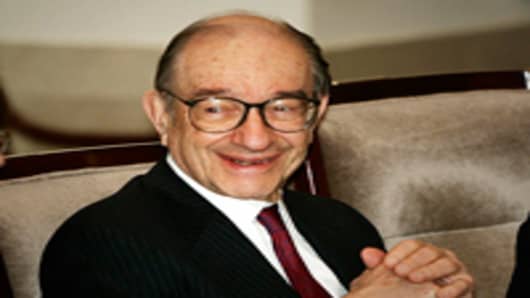There is a unique, structural imbalance in the U.S. economy, former Federal Reserve Chairman Alan Greenspan said Wednesday on CNBC.
“It may be a recession, but I’m not seeing it at the moment, and it’s not relevant as far as I can see,” he said in an interview on “The Kudlow Report.”
The economy, Greenspan said, is unlike anything previously seen.
“The best way I would describe it is to think in terms of two separate economies,” he said. “One is probably 90, 92 percent of the GDP and is doing actually reasonably well. The other 8 percent is largely structures or more exactly, long-lived assets. The attitude of business and households against committing to long-lived assets is extraordinarily suppressed.”
Host Larry Kudlow suggested it resembled a capital strike.
“It’s a capital strike for long-lived buildings, you know, those with 20 years of potential life and longer,” Greenspan said. “It’s both household and residential. The rest of the economy is not doing well but is doing reasonably well. But if you take 50 percent out of 8 percent of the economy, that's the 4 percentage points which the unemployment rate has run up. And that's where all of the problem is.”
(Related: Wall Street's Secret Weapon for Getting an Edge)
On the topic of quantitative easing, Greenspan noted that he has refrained from commenting on Fed policy.
“I will say this, however, that the data do show that the expansion of assets has had very little impact on the economy, for an important reason, that we've created a major increase in the asset side of the Fed balance sheet and a very large trillion and a half increase in excess reserves,” he said.



